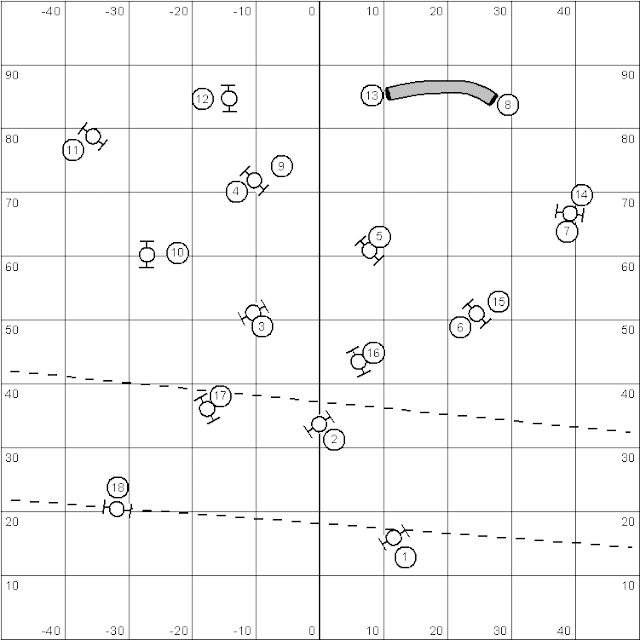The judge was Karl Blakely of Minnesota and three of his four Excellent courses were refreshingly straightforward. The fourth offered a variety of opportunities for going off-course.


Saturday's JWW course was the only course I managed to run as I planned. I even managed to do a fairly nice blind cross between 16 and 17.
By the time we ran Standard, I was fading and knew running along the dogwalk would pretty much exhaust me for the rest of the run. I opted to layer the teeter and push in toward #5. I practically tripped over my own feet turning around for the run to the teeter. Then I ran from the teeter to #9 pulling Belle off #8. The video demonstrates quite clearly the effect of turning your shoulders too soon. I made virtually the same mistake a second time by cutting the corner from the chute to the triple (#14 was actually set more perpendicular to the chute and the triple than the course map shows).

My handling plan for Sunday's JWW course was to lead out between 2 and 3 and run with Belle on my right to #12, executing a front cross on the landing side of #13 and finishing the course with Belle on my left. However, after watching a few teams run, it was quite apparent that the fastest way to get from the #9 to the tunnel was to run with dog on left. Almost every handler did so by doing a take off side front cross at #9. However, by doing it on the landing side, the right wing of #9 was no longer a possible obstacle that the handler might have to avoid before taking off for the tunnel. The vast majority of the large dog handlers opted for the take off side front cross; about half of them placed it really well; the other half finished their cross only to discover they still had to get around the right wing.
And now for the last Excellent course of the weekend. It looks so innocent on paper, but it proved to offer many opportunities to go off course. Since I had been practicing with hoops for drive and distance for the last couple of weeks, I was leery of opening with Belle on my left, and was favoring a lead out to (-55,-25) and turning Belle into the chute off my right. However, after watching team after team go awry somewhere on this course, I decided what the heck and took a small lead ahead and to the right of Belle and went for a front cross between #3 and the chute. We earned a Q and a second place!












